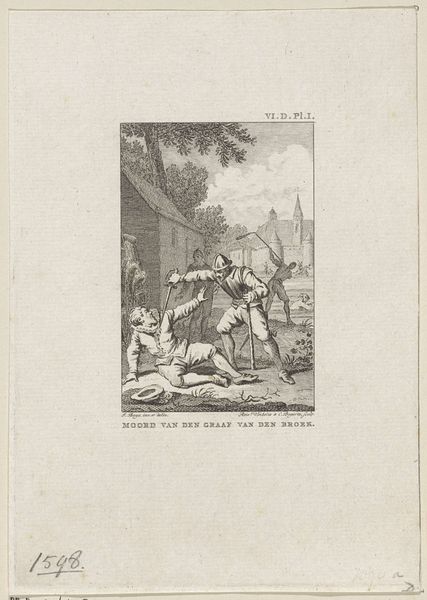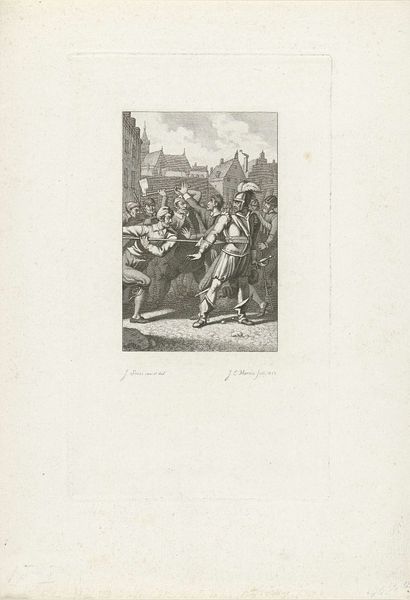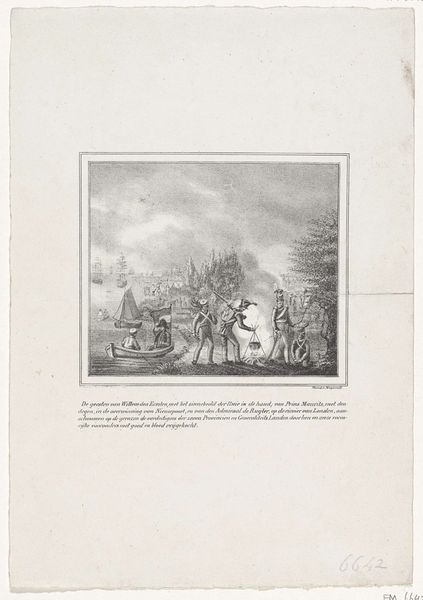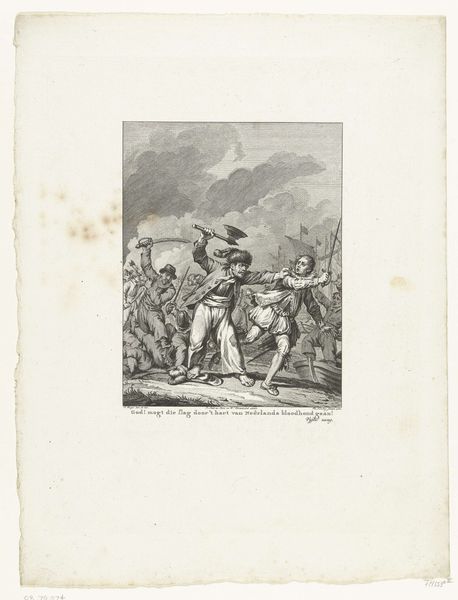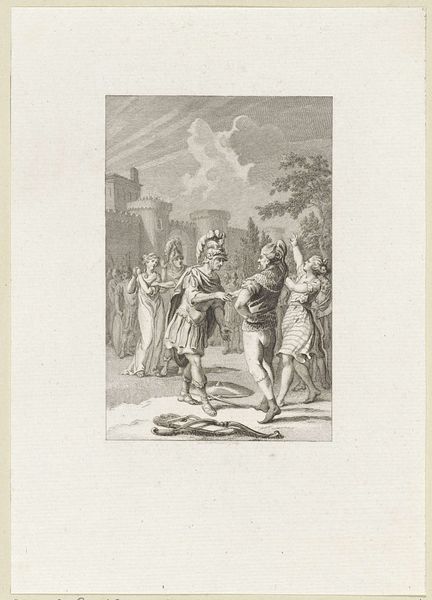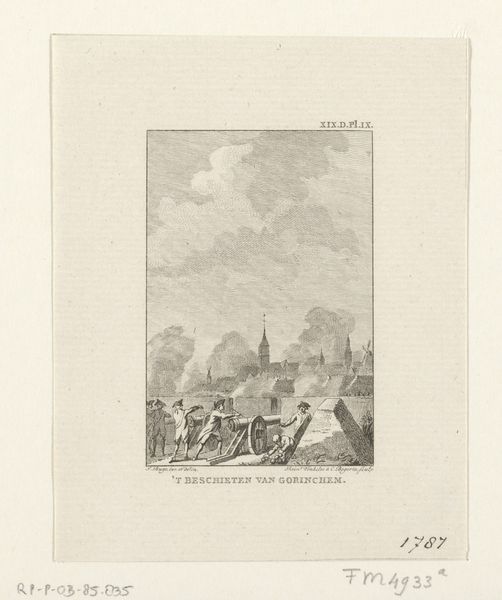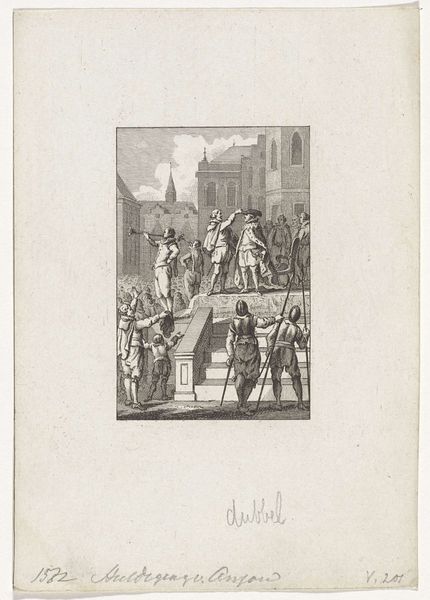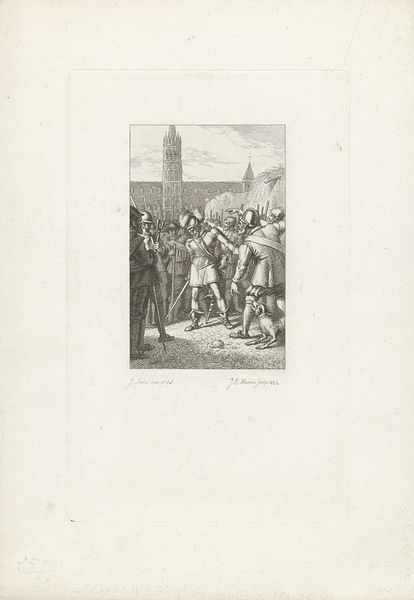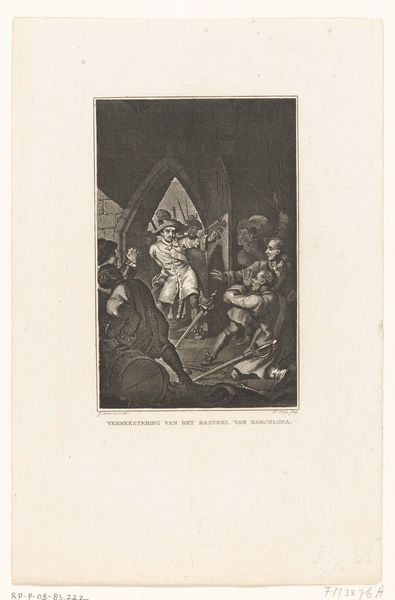
Burgemeester Hasselaar per ongeluk neergeschoten, 1672 1786 - 1792
0:00
0:00
harmanusvinkeles
Rijksmuseum
Dimensions: height 163 mm, width 110 mm
Copyright: Rijks Museum: Open Domain
Curator: Before us we have an engraving by Harmanus Vinkeles, created between 1786 and 1792, depicting "Burgemeester Hasselaar per ongeluk neergeschoten, 1672". It's currently housed at the Rijksmuseum. Editor: What strikes me is the immediate tension – the awkward posture of the two men, the one collapsing and the other awkwardly bracing him. Even the heavy, churning sky above seems to amplify that feeling of unease. Curator: It’s a powerful narrative encapsulated in a print, isn’t it? Think about the etching process itself: the labor of creating those fine lines, the deliberate building up of tone and texture. Each line, each mark speaks to a process and a deliberate social commentary. The print medium made the story accessible beyond elite circles. Editor: The engraver really leans into the visual language of accidental tragedy here. The pose of Burgemeester Hasselaar is classic iconography for defeat, but note that he appears more surprised than wounded! I think this reveals the common tropes that resonate with a knowing audience, using easily understandable images. Curator: But it’s also about power, isn't it? Who controls the story and its distribution? This print solidifies a particular narrative. The materials involved are simple, paper and ink, but consider how widely it might have been circulated and what those repetitive impressions did for public opinion. Was this designed as propaganda or pure history? Editor: You bring up a compelling point. I am also drawn to the contrast between the dark, active foreground figures and the more generalized, distant city behind them. What symbols do the artist draw on? The distant town offers the backdrop of governance as if saying, 'this is about how rulers relate to the world". Curator: Perhaps a broader comment about civic duty and accountability then? What might appear in a history book is right here being made and distributed as a cheap accessible image. That says a great deal about what history truly is - not static - instead malleable and constantly being constructed. Editor: That's quite profound. This deep dive certainly adds layers to my appreciation. Thank you for the enlightenment. Curator: The pleasure was all mine. This work prompts one to reconsider how a relatively accessible print form became central to social messaging through image distribution.
Comments
No comments
Be the first to comment and join the conversation on the ultimate creative platform.
